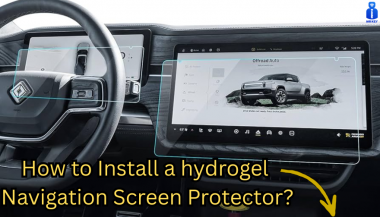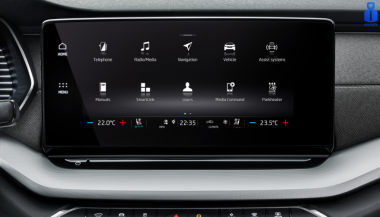The automotive industry is experiencing a transformative shift, and at the center of this revolution is artificial intelligence (AI). From the development of fully autonomous vehicles to enhancements in key systems, AI is changing how we drive, maintain our vehicles, and secure them. While these advancements promise increased efficiency and convenience, they also raise new questions, particularly regarding cost, accessibility, and how car owners will interact with their vehicles in the future.
Let’s take a closer look at how AI is reshaping the automotive world and why it’s important for car owners to understand these changes.
Smarter Cars, Smarter Keys
Artificial intelligence isn’t just revolutionizing self-driving cars—it’s also transforming the traditional car key. What once required a physical key is now being replaced by more advanced, secure alternatives. With the rise of smart keys, biometric access, and mobile apps, car keys are becoming increasingly sophisticated.
AI-powered keyless entry systems allow you to unlock and start your car without needing to take a physical key out of your pocket or bag. The car senses your presence and communicates wirelessly to grant access. Additionally, biometric keys such as fingerprint or facial recognition are gaining traction, ensuring that only authorized users can access the vehicle. These systems are nearly impossible to duplicate, offering an unparalleled level of security.
While these innovations add layers of convenience, they also highlight the growing need for professional key replacement services to ensure your car's security isn’t compromised.
Autonomous Vehicles: A Step Toward the Future
The idea of self-driving cars has long been a futuristic concept, but AI is making it a reality. Although fully autonomous vehicles are not yet mainstream, the technology is evolving quickly. AI algorithms are able to process data from sensors, cameras, and radars in real-time, allowing the car to navigate without human input.
While fully autonomous driving has the potential to reduce accidents caused by human error—responsible for over 90% of crashes today—there are still many challenges to overcome. Self-driving cars must be equipped with robust systems capable of handling emergencies and unpredictable situations, which are crucial for ensuring safety.
Even if true autonomy is still a few years away, many modern vehicles already feature semi-autonomous capabilities, such as adaptive cruise control, automatic emergency braking, and automated parking. These features, powered by AI, offer significant improvements in driving safety and convenience.
Predictive Maintenance: Preventing Problems Before They Happen
Imagine a world where your car could tell you when it’s about to break down. With AI, this is becoming a reality. Predictive maintenance, powered by AI, is revolutionizing how we approach vehicle care. AI-driven systems can analyze your car’s performance in real-time, predicting when parts need servicing before they fail.
Examples of Predictive Maintenance:
- Notifications for upcoming maintenance, such as oil changes or brake pad replacements.
- Alerts about issues like low tire pressure or a battery nearing its end.
- Suggestions for repairs based on your driving patterns, reducing the chances of unexpected breakdowns.
By identifying potential issues before they become major problems, AI helps save you time and money, providing a smoother, more reliable driving experience.
Enhanced Driving Experience
AI is not only about improving vehicle performance but also enhancing your overall driving experience. Through smart technologies, driving has become more intuitive and enjoyable. Voice assistants, for example, allow you to control various functions hands-free, from adjusting climate settings to managing calls and navigation.
AI also customizes your vehicle experience based on your preferences. Over time, AI learns your favorite seating positions, climate control settings, and even your regular routes, making every drive more comfortable. With AI-powered infotainment systems, you can enjoy real-time traffic updates, personalized music playlists, and even hands-free control over entertainment choices.
These innovations make driving safer, more enjoyable, and tailored to your individual needs.
Transforming Vehicle Security
The introduction of AI in automotive security is setting new standards. As vehicles become increasingly connected, the potential for cyber threats rises. Fortunately, AI is being implemented to protect against these risks, offering peace of mind for car owners.
AI-enhanced Security Features:
- Advanced Theft Protection: AI systems can detect unusual activities, like attempted break-ins, and alert you immediately via your smartphone.
- Geo-fencing: Some vehicles now allow you to create safe zones. If your car moves outside the designated area, you’ll receive an instant notification.
- Anti-Hacking Measures: As cars become more integrated with the internet, AI helps protect against cyberattacks, ensuring your vehicle's systems remain secure.
These features not only protect your vehicle from theft but also provide you with more control over your car’s safety, no matter where you are.
What This Means for Key Replacements
As AI continues to evolve in the automotive industry, the process of replacing and programming car keys is becoming more complex. Advanced keys, such as those based on biometric authentication or smartphone applications, are more expensive to replace than traditional metal keys. Furthermore, these modern systems require specialized equipment and expertise to program properly.
For car owners, it’s essential to stay informed about your vehicle’s key system. Always keep a spare key on hand and familiarize yourself with emergency unlocking features, so you're prepared if something goes wrong.
Challenges of AI in Cars
While the benefits of AI in automotive innovation are clear, there are also some challenges to consider. AI can drive up the cost of manufacturing and repairs, and adapting to new features can sometimes be overwhelming for drivers.
- High Costs: Implementing AI technologies in vehicles can increase both the initial price and the cost of repairs.
- Learning Curve: Some drivers may find it difficult to adapt to new, AI-driven features, especially if they are not technologically inclined.
- Dependence on Connectivity: Many AI-powered systems require an internet connection, which can be problematic in remote areas or locations with poor service.
Being aware of these challenges will help you navigate the evolving automotive landscape and make informed decisions about your car’s technology.
Embracing the Future of Driving
Artificial intelligence is rapidly transforming the automotive industry, changing everything from how we drive to how we secure and maintain our vehicles. For car owners, these innovations bring immense convenience and enhanced security. But they also require a deeper understanding of the systems that power your car, from keyless entry to semi-autonomous driving features.
As AI continues to develop, staying informed will help you make the best decisions for your lifestyle and budget. Whether you’re exploring new key technologies or considering a fully autonomous vehicle, the future of driving is undeniably shaped by AI—and it’s already here.

 (1) (1)_1736436407.jpg)
_1736342764.jpg)
_1740493407.jpg)

